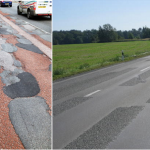Western Mentors Instilled Technical Writing in China
Posted on December 22, 2014
Filed Under Communication, Education, Technology, The Writing Life | Leave a Comment
Here’s a remarkable discovery on our part, illustrating anew how cooperative and interrelated our world can be if we let it. Bet you thought China somehow picked up its technical expertise on its own, enabling it to run rings around the U.S., in some respects, unassisted. Well, that’s not really so. No more than it was when W. Edwards Deming made his first trip to Japan in 1947 and started a quality transfer process there that initiated “Japan’s economic miracle”.
We’re learning from a post by Shannon Li on the Sigma Technology site that international contacts and cooperation have evidently been as important to China for technical communication as Deming-initiated quality awareness was for the Japanese. In 1997 a team of 12 technical communicators from the U.S. and Canada headed by Sam Dragga from Texas Tech University visited China and found it “hungry for technical communication education.”
“With no profession and independent academic discipline here,” Li writes from Beijing, “China was hungry for technical communication education. At that time, the English department trained translators, interpreters and tour guides for business and government organizations. Although there were courses like professional English and English for science and technology, the focus was on professional vocabularies and terms instead of on technical writing.”
So, by gosh, a group of 50 English teachers from colleges and high schools in Jiangsu Province attended lectures by the U.S./Canadian team and prepared six-day courses from them that included topics “like technical communication history, cross cultural communication in technical writing, audience, document design, types of technical writing, etc.” Between the lecturers and their Chinese students, technical writing began taking root in China.
Read more
Note-taking as a Productivity Prod
Posted on December 9, 2014
Filed Under Business, Communication, Technology, The Writing Life | Leave a Comment
 Taking notes isn’t simply scrawling a snapshot of what you’ve read so that you can recall the details later on. Technical writers, especially, should be mindful that note-taking can be a memory jog for inspiration itself – that is, it has a wider function than just “recalling”. It can be a prod for creative advances.
Taking notes isn’t simply scrawling a snapshot of what you’ve read so that you can recall the details later on. Technical writers, especially, should be mindful that note-taking can be a memory jog for inspiration itself – that is, it has a wider function than just “recalling”. It can be a prod for creative advances.
We are reminded of the creativity-prompting potential of note-taking via an edutopia post by T.R. Girill, of the Society for Technical Communication at the Lawrence Livermore National Laboratory.
There were, of course, as Girill observes, the field notes of Henry David Thoreau “on the flowering times of 500 plants near Concord, MA (that) are still used today for comparison with current climate-change data.” But, as he continues, most notes “are used by an audience of one”: yourself. Yet they can extend your reach widely.
Thus, Girill cites Eric Green’s chapter (Ch. 12) in Michael R. Canfield’s book, “Field Notes on Science and Nature” (Cambridge: Harvard University Press, 2011) in urging science students – we’d add practitioners, too – to extend the scope of their note-taking “beyond just observations or numerical data” to include such utilitarian matters as:
“• Memory aids, about places, times and conditions that could be helpful later but will be forgotten if not captured now.
“• Organizational Aids, cross references and page indexes (easiest if the notebook pages are numbered), especially for long projects.
“• Commentary – any remarks that could generate new ideas or improvements on old ideas.”
Writers and reporters have been mindful of the memory-prodding value of notes for ages. Thus the piles of notebooks and other materials that you’re apt to find in the vicinity of newspaper reporters and writers, or at least were, before the acquisition of digital data became so prominent. (We remember the table behind the desk of one reporter at the old Philadelphia Bulletin that was piled so high with notebooks and other source materials that it nearly triggered a newsroom pool as to when it might topple over.)
Girill’s post includes further prompting on memory-jogging techniques stemming from good note-taking. We’d simply restate what should by now be obvious – that the more you earnestly record, the more you’re likely to usefully recall at some especially auspicious point later on. Note-taking is well worth the time involved in jotting informative encounters amply down. – Doug Bedell
Effective Writing Isn’t Necessarily Sparse Expression
Posted on November 21, 2014
Filed Under Communication, The Writing Life | Leave a Comment
There’s a lot of interest in the subject, or style, of minimalist writing – using the fewest words possible to make a point, have impact, be clear. Google the subject, and you’ll find lots of links to a yeasty (that is extensive, rather than minimal) debate. Within limits, being sparse is admirable, so long as you communicate what you’re aiming to say. Ernest Hemingway was one of the early masters of modern minimalism, and his writing is gripping, whatever a comparative word-count with earlier writers might be.
Efficient writing? It all depends on the purpose involved.
 Good writing, actually, is a form of good manners. It’s an imposition on readers to confront them with verbosity, unnecessary words added for “show”. By now, that should be an inarguable literary principle. Good writing, though, isn’t always minimal writing – it’s appropriate writing, well-suited to the characters, purpose or setting being presented in words.
Good writing, actually, is a form of good manners. It’s an imposition on readers to confront them with verbosity, unnecessary words added for “show”. By now, that should be an inarguable literary principle. Good writing, though, isn’t always minimal writing – it’s appropriate writing, well-suited to the characters, purpose or setting being presented in words.
In the discipline of technical writing, we’d add the all-important element not merely of purpose, but specific purpose. In providing instructions to readers on how to accomplish a given procedure both efficiently and safely you want to be as clear as possible. In a technical context, clarity often means providing necessary details and cautions, while in minimalist fiction too many details or grammatical complexities might be considered an imposition on the reader.
In effective technical writing, you want to provide all the necessary details, but in as economical, that is as orderly, not necessarily as sparse, a manner, as possible.
On Google, you’ll be lead, right off, to a post by Jessica Dang on her Minimal Student blog. She is devoted to principles of minimalism in living, not only in writing. But her “Complete Guide to Minimalist Writing,” runs on a bit, presumably what happens when you are highly enthusiastic about a subject.
Writing comes down to a style appropriate to the purpose and need involved. Excessively sparse instructions – we’ve all encountered them – can be frustrating, as annoying as plot twists we’ve not been adequately prepared for. In technical writing, you’re not seeking to create a mood or resolve a crisis, but to avoid one. You’re promoting a mode of safe, economical action, and that takes a fully appropriate body of words to accomplish. – Doug Bedell
Writing Is a Process, Not an Act of Creation
Posted on February 26, 2014
Filed Under Communication, Technology, The Writing Life | Leave a Comment
We’d like to make a distinction here that holds for technical writing as much as for any other kind of writing: Writing is a process, not an act. Writing and editing go together, they are part of the same process. A sentence, a paragraph or a whole page of material doesn’t just get “exhaled” from a word processor in a burst of creativity. The material will likely need to be reworked and tidied up a bit. That’s the writing process , whether in creative or technical writing.
 This important caution occurred as an “Amen,” a hearty acknowledgement, to a video clip by Ugur Akinci, PhD, at the Technical Communication Center, where “tips tutorials and trends” on technical writing and communication are offered. “The division between ‘writing’ and ‘editing’ is artificial,” Dr. Akinci said, “In real life, they are inseparable twins.” That’s inescapably true, and it’s so because, again, writing is a process, not an act of creation.
This important caution occurred as an “Amen,” a hearty acknowledgement, to a video clip by Ugur Akinci, PhD, at the Technical Communication Center, where “tips tutorials and trends” on technical writing and communication are offered. “The division between ‘writing’ and ‘editing’ is artificial,” Dr. Akinci said, “In real life, they are inseparable twins.” That’s inescapably true, and it’s so because, again, writing is a process, not an act of creation.
Good writing requires care, correction and adjustment as one goes along. It may be necessary to explain this to clients from time to time, when they wonder how you spend your time on their behalf. The human creative spirit is an amazing source of information and proficiency, so long as it’s recognized more as a meditation then a thunderbolt. Yes, you can be inspired, but even inspiration will likely require adjustment and polishing. That’s just the way we proceed to be understood clearly and well, whether we’re “creating” or rendering information proficiently. – Doug Bedell
In the Highlands or a Lab, a Writer’s Obligations Persist
Posted on February 10, 2014
Filed Under Communication, Technology, The Writing Life | Leave a Comment
Here are two web commentaries on efficient writing, efficient because it admirably accomplishes its purpose, whether that be to entertain or to instruct. Romance novels are one category, and academic or technical writing another. Technical writing is held to a higher standard of reality, since it describes actual (that is, current) places and/or systems. Romance writing leaves everything to the writer’s conjuring, but a good writer won’t abuse that privileged state.
Academic and technical writing, notes the Precise Edit’s Blog, “can be complicated, tedious and confusing. They can be terribly boring.” And there’s no way to waive such abuses of a reader’s time and attention to duty. Density is density, boring is boring. On the other hand, romance writing, in which the author’s imagination controls the narrative, can be turgid, too.
 Ceci Giltenan is the author of “Highland Solution,” a novel of medieval Scotland published last fall. In her professional life, Ms. Giltenan’s expertise is in drug development “and much of it involves reporting results from human clinical studies. In this kind of writing, one starts at the beginning, tells the full story in chronological order and includes every known detail.”
Ceci Giltenan is the author of “Highland Solution,” a novel of medieval Scotland published last fall. In her professional life, Ms. Giltenan’s expertise is in drug development “and much of it involves reporting results from human clinical studies. In this kind of writing, one starts at the beginning, tells the full story in chronological order and includes every known detail.”
Writing a romance novel, however, is more like creating and solving, or leading the reader to solve, an imagined puzzle. “I provided the pieces and left the reader to put them together.” Leaving it to the reader to put a piece of technical writing together, though, could lead to real-time peril. The two are not equivalent kinds of writing.
Yet both romance and technical writing need to engage their readers, either by stirring their imaginations or leading them efficiently through a process. And authors can write badly in both disciplines. Considerations of innate talent aside, why might they do that? Possibly technical writers might think their writing “is supposed to be dull and confusing, or perhaps they think it sounds more professional,” suggests the Precise Edit’s writer. Or “maybe they have read a lot of poor writing, so when they review their writing, it sounds ‘right.'” Oh dear.
In the case of a romance writer under full steam, a tale has to hang well together. “I still create an extensive dossier capturing details on each character’s life and use it to help determine what they might do in any situation,” notes Ms.Giltenan.
“However,” she adds, “unlike a clinical study report, the most compelling story is not necessarily told chronologically and I am not required to spoon feed the reader every detail. Deciding what parts of the puzzle to reveal has become almost as much fun as being all-knowing.”
“Fun” isn’t the technical writer’s preserve. But being as meticulous as knowing what life in medieval Scotland was like is obligatory there, too. Effective writers can’t escape their obligations in whichever realm – real world or fanciful – they may be active. – Doug Bedell
Will Shakespeare at the Ready
Posted on December 27, 2013
Filed Under The Writing Life | Leave a Comment
We’ve got a new technical writing colleague with us this morning, guys and gals. His name is William Shakespeare, and he has a really authoritative way with words. Will’s presence today is especially welcome because the question of avoiding “his” or “her” in technical writing has come up.
 The English language and usage StackExchange site seems a trifle confused on this. But it refers us to Wikipedia, the web’s collegial font of all wisdom, and, lo, they, too, think highly of Will Shakespeare. Which makes us doubly proud to have him on hand.
The English language and usage StackExchange site seems a trifle confused on this. But it refers us to Wikipedia, the web’s collegial font of all wisdom, and, lo, they, too, think highly of Will Shakespeare. Which makes us doubly proud to have him on hand.
So, what do you do, asks a StackExchange user, to avoid a limiting, in this case, male, gender in a sentence like, “The user attempts to maximize his own capacity.” Well, says Will Shakespeare when we turn to him (via Wikipedia), “There’s not a man I meet but doth salute me / As if I were their well-acquainted friend.” (That’s from Will’s rollicking play The Comedy of Errors.)
It turns out, adds Wikipedia, that “their can be understood equally well as referring to each man considered one at a time, or to all of them collectively.” That’s known, by golly, as the epicene their, meaning of indeterminate gender. And here, via Wikipedia, we have William Thackeray, another English authority, chiming in via his Rosalind saying in Vanity Fair “A person can’t help their birth.”
All of which proves that, should a technical writer’s boss raise questions about his or her usage (“their” simply doesn’t seem to work here, Will), it’s advisable to have a shelf of English classics at hand, assuming you’ve already read them, of course. Have a nice day, Will, and thanks. – Doug Bedell
Writing to Negotiate Challenging Settings Safely
Posted on December 16, 2013
Filed Under Technology, The Writing Life | Leave a Comment
In this season of giving, Michelle Nijhuis provides a paen to science writing, “The Science and Art of Science Writing,” on The New York Times Opinionator blog. Since science writing is the parent tree of technical writing, the sentiments here are worth sharing. “I blame a rattlesnake for my career,” Michelle begins.
 She what? Well, experiences are where you find them and Michelle one night found herself hiking through Arizona desert country when her party came upon a coiled rattlesnake. “The snake was gorgeous, even regal in its growing annoyance,” Michelle recalls, “but I found myself paying more attention to the scientists around it. What had brought them to this particular place and this very odd hobby?…The snake, I realized, was interesting. The people, dubious habits and all, were fascinating.”
She what? Well, experiences are where you find them and Michelle one night found herself hiking through Arizona desert country when her party came upon a coiled rattlesnake. “The snake was gorgeous, even regal in its growing annoyance,” Michelle recalls, “but I found myself paying more attention to the scientists around it. What had brought them to this particular place and this very odd hobby?…The snake, I realized, was interesting. The people, dubious habits and all, were fascinating.”
Just so. Technical writing becomes science writing in the service of helping people, real people making their rounds in actual enterprises – or even fussing with, say, a home computer – more adept at what they’re doing. Your text helps them solve a problem or run a mechanism. It’s the form of writing, perhaps, with the most immediate return, one of direct service and demonstrable results.
Industrial plants and other mechanisms can be terribly complex. To unlock them, to help make them efficiently functional and achieve appropriate results is to provide directions to an immediate end. That’s what technical writing does – there’s little time for pondering, but a great need for following efficiently laid out directions.
Hiking in the Arizona desert at night, you probably wouldn’t have a manual on hand for how to treat a rattlesnake (though you might). But, in Michelle Nijhus’ case, to observe smart people avoiding harm from the encounter was to decide to help other colleagues by providing clear insights and directions to the pathways of science. That’s not technical writing, as such, but it’s awfully close, as close as you might want to get to a rattlesnake without knowing clearly and carefully what you’re doing there. – Doug Bedell
Technical Directives are ‘Content,’ Too
Posted on November 23, 2013
Filed Under Communication, Technology, The Writing Life | Leave a Comment
It was inevitable, and probably not worth fussing over, but technical writing is now referred to, along with all the world’s other information, creative or otherwise, not simply as “information,” “instructions” or “directions,” but as content. Yes, the Big C now encompasses technical writing as, generically, it always did.
 In reflecting on the 50th anniversary of President Kennedy’s assassination, TechWhirl notes how the media/information world has evolved since then. “One thing that has surely changed” the site notes, “is how we find about the details of these national and global tragedies. In 1963, everyone waited for news from venerated news men such as Walter Cronkite, or tuned in their radios as a relatively few reporters bore responsibility for getting the facts out across the newswires. In 2013, we wait for nothing … we get pictures as they happen from the everyday citizens in the street, supplemented by non-stop coverage in the 24/7 cable news cycle. In 1963, the vast majority of humanity were relegated to passive consumers of news. Today, the vast majority can and do actively participate in creating and distributing—in sharing—news and other content.
In reflecting on the 50th anniversary of President Kennedy’s assassination, TechWhirl notes how the media/information world has evolved since then. “One thing that has surely changed” the site notes, “is how we find about the details of these national and global tragedies. In 1963, everyone waited for news from venerated news men such as Walter Cronkite, or tuned in their radios as a relatively few reporters bore responsibility for getting the facts out across the newswires. In 2013, we wait for nothing … we get pictures as they happen from the everyday citizens in the street, supplemented by non-stop coverage in the 24/7 cable news cycle. In 1963, the vast majority of humanity were relegated to passive consumers of news. Today, the vast majority can and do actively participate in creating and distributing—in sharing—news and other content.
“We, as content creators and deliverers, with some special types of expertise, still have much to learn about the processes: what constitutes news and facts, or even the “right” content?….”
In referring to themselves as “content creators,” TechWhirl’s editors, are of course, referring to their posts, not to technical writing (procedures and the like) as such. But it’s a ready extension to include our entire nuts-and-bolts craft as well. Technical writers (like web editors) need to know about the details of their offerings and about using pictures or diagrams to get make instructions as inclusively complete and helpful for their own “everyday citizens (users)” as readily as possible.
So, not cutting it too fine, good, well-organized writing, in whatever context and for whatever purpose, is, and has always been, content, which, itself, has surely been a buzzword as 2013 begins to turn. Hail to all content creators who do their work carefully and well! – Doug Bedell
Analogies for Good Content – It’s Smooth, for One
Posted on October 28, 2013
Filed Under Communication, Technology, The Writing Life | 2 Comments
Okay, need an excuse for being an orderly writer? You shouldn’t, but if you do, look at it from the viewpoint of the content you’re working with. Oh really?
 Well, that’s what a writer named Vinish Garg suggests you do in a post on the Enjoy Technical Writing (ETW) blog. Content, he feels, doesn’t like to be jostled around, or crammed into any place it seems it might fit. It seems to have bearings, real emotional needs, of its own. Garg uses analogies with a parking lot, a poorly patched road and a merge lane on a highway. The one we like best, that seems to fit best, is the poorly patched road.
Well, that’s what a writer named Vinish Garg suggests you do in a post on the Enjoy Technical Writing (ETW) blog. Content, he feels, doesn’t like to be jostled around, or crammed into any place it seems it might fit. It seems to have bearings, real emotional needs, of its own. Garg uses analogies with a parking lot, a poorly patched road and a merge lane on a highway. The one we like best, that seems to fit best, is the poorly patched road.
Content that doesn’t fit well, that doesn’t really belong in the place a careless writer put it, is like adding another sloppy patch to a poorly patched road. It’s not smooth, but bumpy. It causes the reader to wonder, “Does this make sense? Is it really correct? Does this really belong here?” And you don’t want to slow too much a driver whose main interest is breezing his way to understanding, or at least steering smoothly through a difficult patch. Readers, obviously, don’t like detours, roadblocks, or too many bumpy spots.
That’s not to agree that content has a mind, or intent, of its own, as Vinish Garg evidently feels, only that the reader does. He or she wants content that makes sense without too much steering. Good writing isn’t a game of bumper cars. – Doug Bedell
Persistence Rewarded M.J. Hurley
Posted on September 12, 2013
Filed Under Business, Communication, Technology, The Writing Life | Leave a Comment
Dennis Owen and I admire greatly M.J. Hurley, a technical writer whose accomplishments we read about in a Washington Post column by Thomas Heath. M.J. has built a technical writing business that earns her $400,000 annually. She did it through persistence and inspired toil, inherited from her mother, who was killed when she walked into a robbery at a 7-Eleven store in North Carolina 38 years ago.
 After teaching and working on her PhD, M.J. decided to go into technical writing and landed her first contract at PPD, a pharmaceutical company in Wilmington, N.C. She landed that work out of sheer tenacity. “I called anyone at PPD who would listen to me,” M.J. recalled. She finally got a contract that “included teaching all new PPD employees to write internal documents.” One of the women at PPD took her aside and told her she wasn’t charging enough, so she upped her rate, in light of the value her technical writing services were adding to the company’s functioning.
After teaching and working on her PhD, M.J. decided to go into technical writing and landed her first contract at PPD, a pharmaceutical company in Wilmington, N.C. She landed that work out of sheer tenacity. “I called anyone at PPD who would listen to me,” M.J. recalled. She finally got a contract that “included teaching all new PPD employees to write internal documents.” One of the women at PPD took her aside and told her she wasn’t charging enough, so she upped her rate, in light of the value her technical writing services were adding to the company’s functioning.
“I don’t teach grammar,” M.J. says, “I teach critical thinking. You always have to think about the point you are making. Whether you are writing a user manual, an engineering report or telling your boss what you accomplished on a trip, you have to remember what you are trying to accomplish. You are writing for the customer, not for the person next to you in the pod.”
That’s the aim of any good writing – its impact in the context of its intended use. Technical writers, like any other writers, need appropriately high horizons. M.J. is in demand by managers “who find themselves spending too much time rewriting the reports handed in by their staffers.”
That registers with Dennis. “I basically got my start as a technical writer,” he recalls, “when one of the managers I worked for in Idaho noticed I could write and started giving me reports from other engineers to fix so he didn’t have to. That seems like eons ago.”
“My favorite all-time edit (I’ll never forget it),” Dennis adds, “was when an engineer was writing about a calculation and instead of writing ‘multiply the value by six,’ he wrote ‘the value is augmented by a multiplicative factor of six’…I love that.”
M.J.’s work and the recognition it’s been receiving, Dennis notes, “illustrates how valuable good, concise writing is to a company.” It surely does. – Doug Bedell
(Photo of M.J. Hurley)
« go back — keep looking »Recently
- Presentations With Forethought
- Technical Writing’s Lineage – Surely It’s Deeper than Digital
- At the Holidays, Twitting Amazon
- Successful Cookie Baking – From Mom, an Acknowledged Expert
- Slides for a Tech Writer’s Craft
- Digital or Not, Be Clear
- Being Watchful About Digital Designs…
- When Proposals Don’t Click, Keep Making Them Anyway
- Like a Good Gardener, Help an Enterprise Keep Itself Current
- We’re Leaders All, And Need to Think That Way
Categories
Archives
- January 2017
- December 2016
- November 2016
- October 2016
- September 2016
- August 2016
- July 2016
- June 2016
- May 2016
- April 2016
- March 2016
- February 2016
- January 2016
- December 2015
- November 2015
- October 2015
- September 2015
- August 2015
- July 2015
- June 2015
- May 2015
- April 2015
- March 2015
- February 2015
- January 2015
- December 2014
- November 2014
- October 2014
- March 2014
- February 2014
- January 2014
- December 2013
- November 2013
- October 2013
- September 2013
- August 2013
- July 2013
- June 2013
- May 2013
- April 2013
- March 2013
- February 2013
- January 2013
- December 2012
- November 2012
- October 2012
- September 2012
- August 2012
- July 2012
- June 2012
- May 2012
- April 2012
- March 2012
- February 2012
- January 2012
- December 2011
- November 2011
- October 2011
- September 2011
- August 2011
- July 2011
- June 2011
- May 2011
- April 2011
- March 2011
- February 2011
- January 2011
- December 2010
- November 2010
- October 2010
- September 2010
- August 2010
- July 2010
- June 2010
- May 2010
- April 2010
- March 2010
- February 2010
- January 2010
